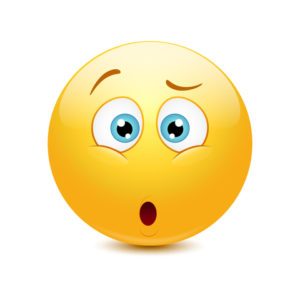To ❤️or Not to ❤️: A Guide to Tricky Emoji
 April 10, 2019
April 10, 2019
A Guide to Tricky Emoji
A colleague recently texted me with a wonderful idea. As someone who messages quite a bit, both personally and professionally, I’m pretty up-to-date on proper etiquette. But when I tried to choose an emoji heart to indicate that I loved my colleague’s idea I was stymied. There were so many choices! A yellow heart? A beating red heart? A large pink heart flanked by smaller hearts?
I’m not alone in my confusion. The misuse of emoji is fodder for Buzzfeed articles about the generation gap between parents and their children — they even show up as plot points in comedies. Here are some of the most commonly used emoji and what they really mean.
Hearts. We all know hearts represent love, but their colors add another layer of meaning. Bustle published a great guide to heart colors that I like to reference. If you’re familiar with the subtle language of giving flowers, you’ll notice a few similarities: Yellow for warmth, purple for drama and glamour, a cluster for over-the-top expression. Save a single red heart, like a single red rose, for a love interest.
Wink. A wink in real life might indicate a joke or a flirtation. In emoji, it is most definitely the latter. Not appropriate in professional texts or with someone other than a partner, spouse, or potential love interest.
Crying laughing. This emoji indicates that you’re laughing so hard that you’re crying — definitely different than the laughing emoji, for which it’s sometimes confused. Make sure you don’t choose the version with a drop of water coming from its forehead: that indicates a nervous, cold sweat.
Smiling face with hands. This face seems very happy, but the hands are an indication that something else is going on. This emoji is a virtual hug — not appropriate for your boss, for example.
Expressionless face. Don’t use this emoji unless you want to convey your displeasure or lack of enthusiasm for an idea, person, or project.
Smiling face with heart eyes. Be careful when using this emoji — it can be applied to an idea you love, but also indicate love or flirtation to the person on the other end of your text message.
There are hundreds of emoji. I’ve concentrated on the way these emoji are used in North America and Europe, but you may run into different interpretations in Asia, for example. When in doubt, type it out rather than use a symbol.
Do you have any emoji horror stories? Please share them in the comments below!
 Print This Post
Print This Post
Leave a Reply




2 Responses to To ❤️or Not to ❤️: A Guide to Tricky Emoji
A few years ago, before emojis were more standardized than they are today, a male colleague at work was on a project with a female colleague. They were using an instant messenger to communicate. One day he got a visit from human resources and his boss regarding his inappropriate messages. His female colleague complained because he was sending her a “blowing a kiss” emoji regularly during their conversations. On his machine, though, it was a “thumbs up” that he was sending. All was well again in the office but we did end up with an HR ban emojis for about 2 years.
Hi Tracy, thanks for sharing your work related emoji story. The end result could have been a lot worse! It does appear that different platforms and operating systems show emojis in different ways. As I mentioned in the blog post, if you are unsure how it will display or be perceived, best to omit or type it out.